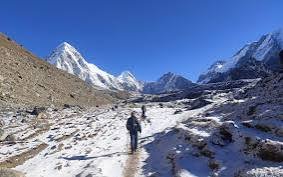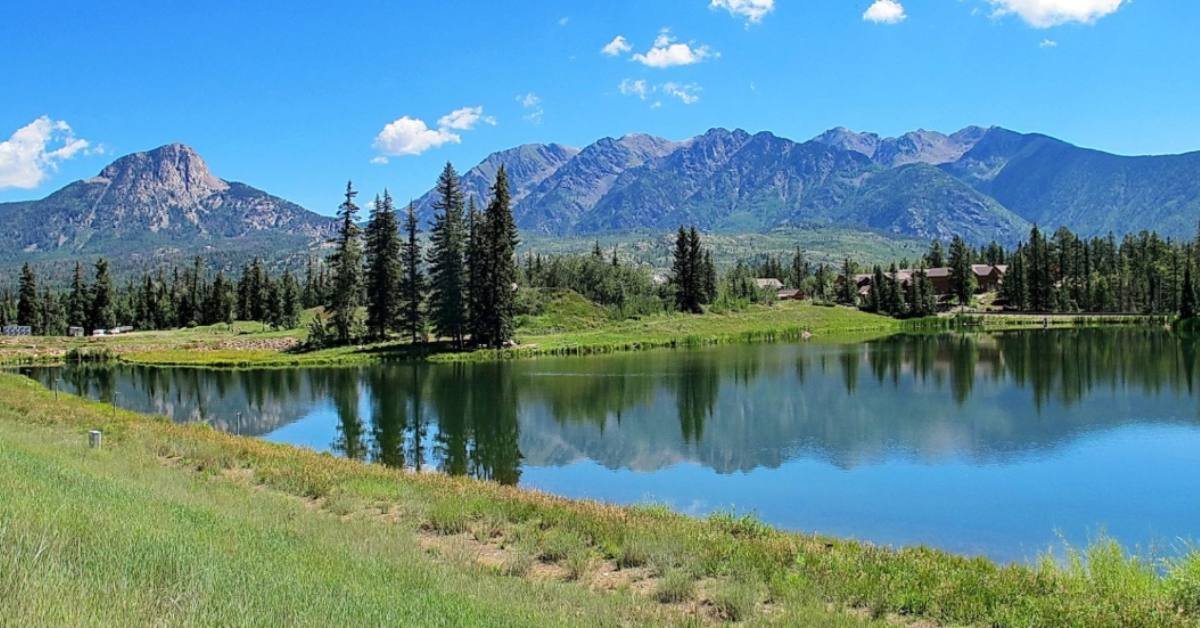Altitude is a critical consideration when preparing for the Everest Base Camp trek with Sherpa Expedition. The journey takes trekkers to high altitudes, reaching over 5,000 meters (17,000 feet) above sea level at Base Camp. Proper preparation and awareness of altitude-related challenges are essential for a safe and enjoyable trekking experience.
Acclimatization is the process of the body adjusting to decreased oxygen levels at higher altitudes. It’s crucial to the success of the Everest Base Camp trek. Sherpa Expedition meticulously plans acclimatization days into the itinerary, allowing trekkers to gradually ascend and adjust to increasing altitudes. These rest days help prevent altitude sickness and ensure trekkers can comfortably continue their journey.
Physical fitness is another key aspect of preparation. While the Everest Base Camp trek doesn’t require advanced mountaineering skills, it does involve walking long distances over varied terrain, including steep ascents and descents. Building cardiovascular endurance and leg strength through regular exercise such as hiking, jogging, and cycling can significantly enhance trekking performance. Sherpa Expedition provides pre-trek fitness guidelines and recommends a training regimen tailored to the demands of high-altitude trekking.
Hydration and nutrition play vital roles in altitude adaptation and overall trekking performance. Drinking plenty of water helps prevent dehydration, a common concern at high altitudes. Sherpa Expedition guides advise trekkers to drink at least 3-4 liters of water per day and avoid excessive caffeine and alcohol consumption, which can contribute to dehydration. Nutritious meals rich in carbohydrates, proteins, and vitamins support energy levels and aid in recovery after strenuous trekking days. Local Sherpa cuisine offered at tea houses along the route provides hearty and nourishing meals that replenish energy stores.
Altitude sickness, also known as acute mountain sickness (AMS), can affect trekkers ascending too quickly without adequate acclimatization. Symptoms include headaches, nausea, dizziness, and difficulty sleeping. Sherpa Expedition guides are trained to recognize AMS symptoms and provide assistance when necessary. Trekkers are encouraged to communicate any discomfort promptly to their guides to ensure timely intervention and appropriate management.
In some cases, trekking at high altitudes may require medications to prevent or alleviate symptoms of altitude sickness. Consultation with a healthcare professional before the trek is recommended to discuss options such as acetazolamide (Diamox), which helps prevent AMS by increasing respiratory rate and improving oxygenation. Sherpa Expedition guides carry basic medical supplies and oxygen cylinders as a precautionary measure, ensuring trekkers’ safety throughout the journey.
The weather in the Everest region can be unpredictable, with temperatures varying widely between daytime and nighttime. Trekkers should pack clothing layers that can be easily adjusted to adapt to changing weather conditions. Sherpa Expedition provides a comprehensive packing list that includes essential items such as thermal layers, waterproof jackets, gloves, and hats to protect against cold temperatures and wind chill at higher altitudes.
Preparing for the Everest Base Camp trek with Sherpa Expedition involves understanding the challenges posed by altitude and taking proactive steps to mitigate risks. By prioritizing acclimatization, physical fitness, hydration, nutrition, and awareness of altitude sickness symptoms, trekkers can embark on a safe and rewarding journey through the breathtaking landscapes of the Himalayas. Sherpa Expedition’s expertise and support ensure that trekkers are well-prepared to experience the awe-inspiring beauty and cultural richness of Everest Base Camp while prioritizing safety and enjoyment throughout the adventure.
Introduction: The Challenge of High-Altitude Trekking
High altitude trekking, such as the journey to Everest Base Camp with Sherpa Expedition, presents unique challenges due to reduced oxygen levels and harsh environmental conditions. Trekkers navigate steep ascents, rugged terrain, and unpredictable weather, requiring thorough preparation and awareness of altitude-related risks for a safe and successful adventure.
Understanding Altitude Sickness: Causes and Symptoms
Altitude sickness occurs when ascending to high altitudes too quickly, resulting in the body’s struggle to adjust to decreased oxygen levels. Common causes include rapid ascent without adequate acclimatization, dehydration, and individual susceptibility. Symptoms range from mild headaches, nausea, and dizziness (Acute Mountain Sickness – AMS) to more severe conditions like High Altitude Pulmonary Edema (HAPE) and High Altitude Cerebral Edema (HACE), which can be life-threatening if not promptly treated.
The Importance of Acclimatization: What It Means
Acclimatization is the process by which the body gradually adjusts to higher altitudes, allowing it to cope with reduced oxygen levels more effectively. Sherpa Expedition’s trekking itineraries include strategically placed acclimatization days, during which trekkers rest and allow their bodies to adapt to increased elevations. Adequate acclimatization reduces the risk of altitude sickness, enhances physical performance, and ensures a safer and more enjoyable trekking experience.
Different Types of Altitude Sickness: AMS, HAPE, and HACE
Altitude sickness manifests in various forms, each with distinct symptoms and severity. AMS, characterized by headaches, nausea, and fatigue, is the most common and typically mild if managed promptly with rest and hydration. HAPE involves fluid accumulation in the lungs, causing severe breathing difficulties, while HACE affects the brain, leading to confusion, hallucinations, and impaired cognitive function. Recognizing symptoms early and descending to lower altitudes are crucial for treating HAPE and HACE effectively.
Preparing Physically: Training for High Altitude
Physical preparation is essential for tackling the demands of high altitude trekking. Trekkers should focus on cardiovascular fitness through activities such as hiking, running, cycling, and stair climbing to improve endurance and stamina. Strength training for leg muscles and core stability enhances balance and reduces the risk of injuries on uneven terrain. Sherpa Expedition provides pre-trek fitness guidelines tailored to the challenges of high altitude trekking, ensuring trekkers are adequately prepared to meet the physical demands of ascending to Everest Base Camp.
Planning Your Itinerary: Gradual Ascent Strategies
A well-planned itinerary for high-altitude trekking, such as the Everest Base Camp trekking with Sherpa Expedition, emphasizes gradual ascent strategies to minimize the risk of altitude sickness. The itinerary includes acclimatization days at key points along the route, allowing trekkers to adjust to increasing elevations slowly. Sherpa Expedition’s experienced guides ensure that the trekking pace and altitude gains are manageable, promoting safety and optimal acclimatization for all participants.
Recognizing Signs of Altitude Sickness in Yourself and Others
Altitude sickness symptoms can vary from mild to severe and may affect trekkers differently. It’s essential to recognize early signs such as headaches, nausea, fatigue, and loss of appetite (common symptoms of Acute Mountain Sickness – AMS). Sherpa Expedition guides educate trekkers about these symptoms and monitor their well-being throughout the trek. Trekkers are encouraged to communicate any discomfort or changes in health promptly to ensure timely intervention and appropriate measures, including descending to lower altitudes if necessary.
Hydration: Staying Properly Hydrated at High Altitude
Maintaining adequate hydration is crucial for high-altitude trekking, where dry air and increased respiratory rate can lead to dehydration. Sherpa Expedition advises trekkers to drink plenty of fluids throughout the day, including water, herbal teas, and electrolyte solutions. Hydration helps regulate body temperature, supports circulation, and aids in altitude acclimatization. Trekkers are encouraged to carry a reusable water bottle and refill it regularly at designated stops along the trekking route.
Nutrition: Foods that Support High-Altitude Trekking
Nutrition plays a vital role in sustaining energy levels and supporting altitude acclimatization during the Everest Base Camp trek. Sherpa Expedition recommends a balanced diet rich in carbohydrates, proteins, and vitamins to fuel physical exertion and aid muscle recovery. Local Sherpa cuisine served at tea houses includes hearty dishes like dal bhat (rice and lentil soup), potatoes, and Tibetan bread, providing essential nutrients and calories for sustained trekking performance. Trekkers are advised to eat frequent small meals and snacks throughout the day to maintain energy levels and prevent altitude-related fatigue.
The Role of Rest Days in Acclimatization
Rest days are integral to the acclimatization process during high-altitude trekking. Sherpa Expedition incorporates rest days into the itinerary, typically at strategic points where trekkers reach higher altitudes. These rest days allow trekkers to relax, recover, and adapt to reduced oxygen levels, minimizing the risk of altitude sickness. Sherpa Expedition guides organize short hikes or cultural visits during rest days to keep trekkers active without overexerting them. Adequate rest promotes physical well-being and enhances overall trekking experience by ensuring trekkers are prepared for subsequent ascents to higher altitudes.
Using Medication: Diamox and Other Preventative Measures
Medications such as acetazolamide (Diamox) are commonly used as preventative measures against altitude sickness during high-altitude trekking like the Everest Base Camp expedition with Sherpa Expedition. Diamox works by increasing the amount of bicarbonate excreted in urine, which leads to a compensatory metabolic alkalosis, thus improving oxygenation. It is typically started before ascent and continued for the first few days at altitude. Trekkers should consult with a healthcare provider for guidance on dosage and potential side effects. In addition to medications, preventative measures include gradual ascent, proper hydration, and adherence to acclimatization guidelines set by Sherpa Expedition guides.
Mental Preparation: Psychological Aspects of High Altitude
High-altitude trekking can be physically demanding and mentally challenging. Trekkers may encounter isolation, fatigue, and apprehension due to the unfamiliar environment and altitude-related stressors. Mental preparation is crucial for maintaining resilience and positivity throughout the journey. Sherpa Expedition encourages trekkers to practice mindfulness, relaxation techniques, and positive visualization to manage stress and maintain mental clarity. Supportive camaraderie among fellow trekkers and guidance from experienced Sherpa Expedition guides help foster a supportive environment for mental well-being on the trail.
Gear Recommendations: What to Pack for Altitude
Packing appropriate gear is essential for comfort, safety, and performance during high-altitude trekking. Sherpa Expedition provides a comprehensive gear list tailored to the demands of the 12 Day Everest Base Camp trek. Essential items include layered clothing for variable weather conditions (including a waterproof jacket and insulated layers), sturdy trekking boots with ankle support, UV-protective sunglasses, a wide-brimmed hat, and a quality sleeping bag rated for cold temperatures. Additional gear includes trekking poles for stability, a durable backpack, and personal items such as sunscreen, lip balm, and a first aid kit. Sherpa Expedition guides offer advice on gear selection and ensure trekkers are properly equipped for the challenges of altitude and weather in the Himalayas.
Understanding the Role of Sherpas in Acclimatization
Sherpas play a crucial role in facilitating acclimatization during high-altitude trekking. Their local knowledge, experience, and guidance are invaluable in navigating the challenges of altitude and ensuring trekkers’ safety and well-being. Sherpa Expedition guides monitor trekkers’ health, provide education on altitude sickness prevention, and adjust the trekking pace to promote gradual acclimatization. They also share cultural insights and local traditions, enriching the trekking experience and fostering mutual respect between trekkers and Sherpa communities. Sherpas’ dedication to safety and acclimatization enhances trekkers’ confidence and enjoyment throughout the Everest Base Camp expedition.
Celebrating Small Milestones: Boosting Morale on the Trail
Celebrating small milestones during the Everest Base Camp trek boosts morale and enhances trekkers’ motivation. Sherpa Expedition encourages trekkers to acknowledge achievements such as reaching new altitude records, crossing challenging terrain, or visiting culturally significant sites along the trail. Small celebrations, such as sharing meals with fellow trekkers or participating in traditional Sherpa ceremonies, create memorable experiences and strengthen camaraderie. Sherpa Expedition guides organize group activities and encourage trekkers to reflect on personal achievements, fostering a supportive and positive atmosphere throughout the trek. By celebrating small milestones, trekkers cultivate resilience, build confidence, and forge lasting memories in the breathtaking landscapes of the Himalayas.
Emergency Procedures: Knowing When to Descend
In high-altitude trekking, such as the Mount Everest Base Camp trek with Sherpa Expedition, knowing when to descend is crucial for managing altitude-related emergencies. Symptoms of severe altitude sickness, such as High Altitude Pulmonary Edema (HAPE) or High Altitude Cerebral Edema (HACE), require immediate descent to lower altitudes where oxygen levels are higher. Sherpa Expedition guides are trained to recognize symptoms, assess trekkers’ health, and make informed decisions about descending to ensure safety. Trekkers are advised to communicate any discomfort or worsening symptoms promptly to their guides to initiate emergency procedures and expedite evacuation if necessary.
Learning from Others: Personal Stories of High-Altitude Experiences
Personal stories of high-altitude experiences offer valuable insights and lessons for trekkers preparing for the Everest Base Camp trek. Sherpa Expedition encourages trekkers to engage with fellow participants and share experiences of acclimatization challenges, achievements, and cultural encounters along the trail. Hearing diverse perspectives enriches the trekking experience, fosters camaraderie, and builds a supportive community among trekkers and Sherpa guides. Personal stories also highlight the resilience, adaptability, and personal growth that come from overcoming altitude-related obstacles and embracing the adventure of trekking in the Himalayas.
The Importance of Listening to Your Body: Respecting Your Limits
Listening to your body and respecting your limits are essential principles for safe and enjoyable high-altitude trekking. Sherpa Expedition emphasizes self-awareness and encourages trekkers to recognize early signs of altitude sickness, fatigue, dehydration, and physical exhaustion. Taking breaks, staying hydrated, and adjusting trekking pace according to personal comfort levels support acclimatization and reduce the risk of altitude-related illnesses. Sherpa guides prioritize trekkers’ well-being, offering guidance and support to ensure each participant can safely navigate the challenges of ascending to Everest Base Camp while maintaining optimal physical and mental health.
Debunking Myths About Altitude and Trekking
Altitude and trekking myths can perpetuate misconceptions and anxiety among trekkers preparing for high-altitude adventures like the Everest Base Camp trek. Sherpa Expedition dispels common myths, such as the belief that altitude sickness only affects inexperienced trekkers or that fitness level alone determines susceptibility. Education on altitude physiology, acclimatization strategies, and the importance of gradual ascent empowers trekkers to make informed decisions and approach the trek with confidence. Sherpa Expedition guides provide accurate information, address concerns, and promote a positive mindset focused on safety, enjoyment, and cultural appreciation throughout the trekking journey.
Conclusion: Embracing the Altitude Challenge on the Everest Base Camp Trek
The Everest Base Camp trek with Sherpa Expedition presents trekkers with a unique altitude challenge amidst the awe-inspiring landscapes of the Himalayas. By understanding emergency procedures, learning from personal stories, listening to their bodies, and debunking myths about altitude, trekkers can embrace the adventure with confidence and respect for the natural environment. Sherpa Expedition’s commitment to safety, acclimatization, and cultural enrichment ensures a transformative journey where trekkers can discover their limits, forge meaningful connections, and celebrate the accomplishment of reaching Base Camp. Embracing the altitude challenge is not just about summiting, but also about experiencing personal growth, resilience, and the profound beauty of the world’s highest mountains.





